#vatopedi
Text

mount athos series 420 / monasteries
© 2024 Yiannis Krikis
#mount athos#lensblr#lensculture#fine art photography#photographers on tumblr#landscape#greece#vatopedi#architecture#monastery
98 notes
·
View notes
Text

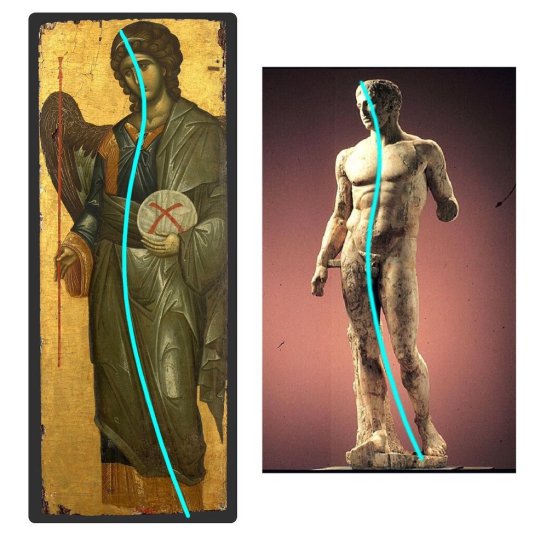
Left
Archangel Gabriel
👨🏻🎨 Unknown
🗓 14th c.
📍 Vatopedi Monastery, Mount Athos
Right
Doryphoros (Roman copy)
👨🏻🎨 Polykleitos
🗓 4th c. BCE (Original creation)
📍 Naples National Archaeological Museum
Ancient Greek and Late Byzantine art tend to avoid perfectly horizontal and vertical lines because they do not produce inner and outer relations -rhythm- and applied on a figure, they make it look stiff and unnatural; Instead, they always prefer diagonal axes. So, when they want to make a standing figure, they analyze the vertical line into diagonal movements that create something like a "Z"-like position -a practice that makes them look “alive” and much more dynamic.
👀 Extra fact:
The same principle applies to Jesus on the cross!
Full source and post (byzantinepainting on insta)!
13 notes
·
View notes
Photo

#february #greece🇬🇷 #travelinspiration #flowerphoto #tree🌳 #pink#travelingram #monastery #travelpic #vatopedu#vatopedi #vatopedimonastery (la Holy Great Monastery Vatopedi - Ιερά Μεγίστη Μονή Βατοπαιδίου) https://www.instagram.com/p/ColXe7pIIMA/?igshid=NGJjMDIxMWI=
#february#greece🇬🇷#travelinspiration#flowerphoto#tree🌳#pink#travelingram#monastery#travelpic#vatopedu#vatopedi#vatopedimonastery
0 notes
Text
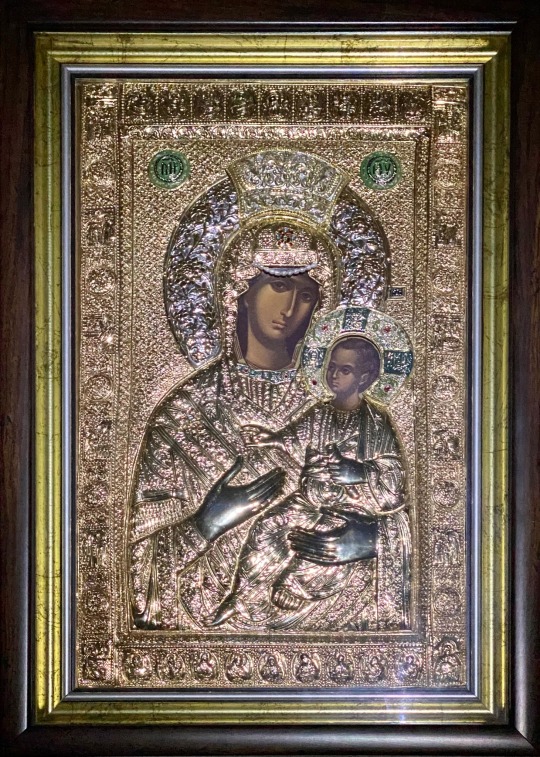
“If a person wants to get an idea about the pyramids of Egypt, he must either trust those who have been in immediate proximity to the pyramids, or he must get next to them himself. There is no third option.
In the same way, a person can get an impression of God: he must either trust those who have stood and stand in proximity to God, or he must take pains to come into such proximity himself.”
+ St. Nikolai Velimirovich
#Panagia#Panagia Vimatarissa#holy icons#iconography#Holy Mountain#Mount Athos#eastern orthodox#eastern orthodoxy#orthodox christianity#orthodoxy#greek orthodox#orthodox church#serbian orthodox#christianity#orthodox#this icon is my fave in my collection#God forgive me I never show the right reverence to the beautiful window He’s given me#Icons are windows to Heaven#Vimatarissa#Holy Monastery of Vatopedi
99 notes
·
View notes
Text
Day 4. Washing your face
overlooking the sea from the Monastery of St Arsenios in the mountains
Monasteries are places of healing and light. The Monastery of St Arsenios is one such place.
N.b.This is as close as I came to Agion Oros in the distance!
Another little miracle enabled us to meet Theologos and Vaiga with children again . We were joined by a priest from Germany Fr Victor with his Presbytera and children.…

View On WordPress
0 notes
Link
0 notes
Text

Manuel Panselinos (attributed to) - Mongols and Byzantines feasting, among whom there is Andronikos II Palaiologos’ personal adviser, Theodore Metochites.
Fresco in Vatopedi, Mount Athos, Greece. (c. 1312).
A Byzantine-Mongol Alliance occurred during the end of the 13th and the beginning of the 14th century.
9 notes
·
View notes
Photo


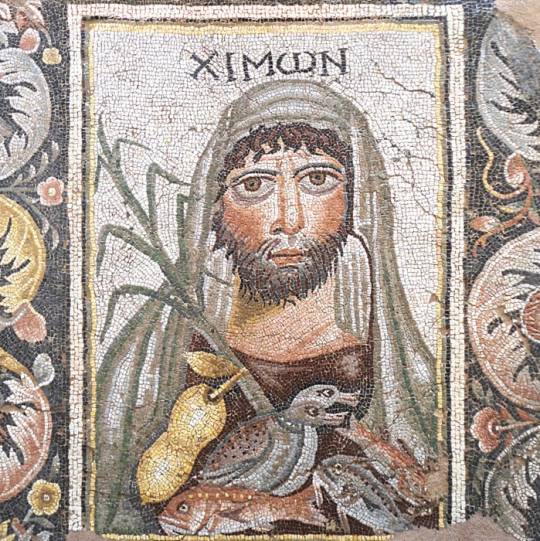
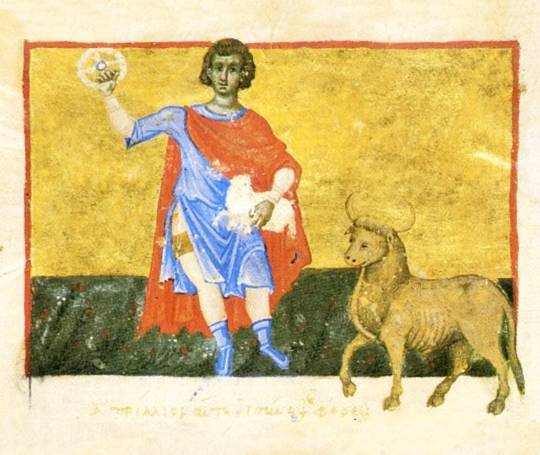


Art that presents the Byzantine Empire from another perspective
Alexander the Great chases hairy women with dogs, 14th c. Greek Institute of Byzantine and post-Byzantine Studies.
The Mandrake. From De Materia Medica, a book written by Dioscorides, a Greek doctor in the Roman army, 50-70 AD. National Library of Austria. (That’s the whole Roman Empire still, but I couldn’t leave it behind.)
Personification of the Winter, 5th c. Found in the Baths of Argos, Greece.
The month of April with the zodiac sign Aries, 1346, Vatopedi Monastery, Mount Athos, Greece.
Dionysus is born from Zeus’ thigh, 12th c. , Panteleimon Monastery, Mount Athos, Greece (Photo credit: Antonio Guiomar).
Hippocrates of Kos (460 - 377 BC), artwork dates to 1341 - 1345. National Library of France.
Sources: x, x
#greece#byzantine empire#art#east roman empire#eastern Roman Empire#roman empire#byzantine culture#greek culture
89 notes
·
View notes
Photo




“ Elder Joseph, insignificant according to the world, was born in Drousia, a small village in the district of Paphos on the island of Saints [Cyprus], on July 1st 1921.
In 1936 he followed a divine calling and entered the Sacred Monastery of Stavrovouni with the blessing of his parents. In the beginning of 1947 he entered the Skete of Saint Anna with certain compatriots who were living the monastic life there, but in the summer of the same year he met with the blessed Elder Joseph the Hesychast; He returned to Mt. Athos on October 26, 1981. Elder Joseph was and remained the spiritual father of Vatopaidi Monastery until his falling asleep, which occurred on July 1, 2009. “
“ He sought obscurity. He did not seek worldly praise or glory. He endured humbly, meekly and without grumbling all scorn, contempt, disgrace, criticism and slander. He had “compassionate pity” and his heart received and forgave all, because he gave room within himself for Christ.”
૮₍ ˃ ⤙ ˂ ₎ა “Do not b scared. You will not b lost. The Grace of our Jesus will not abandon us neither will the prayers of our fathers and our elders.”
૮₍ ˃ ⤙ ˂ ₎ა “You must keep three principles: Austerity for yourselves, sympathy for your fellow men and faith to God. All these attract God´s Grace and Mercy.”
“All Christians must prove what they believe in by their way of live!
Also love each other!
Love should apply especially into the families!
Man must give his love to the woman! Forget her name and always call her: ‘my love’!”
Elder Joseph of Vatopedi ( x x x x x x) ૮⍝• ᴥ •⍝ა
#orthodoxy#hermit#churchposting#this time it was rlly hard to find stuff lmao#srry for the long txt omg#i say this everytime but hes one of my fav religious persons
49 notes
·
View notes
Text

Holy and Great Thursday. The Mystical (Last) Supper. Early 14th c. Fresco in Vatopedi Monastery, Mt. Athos. [OrthoChristian.com]
18 notes
·
View notes
Text
SAINTS&READING: FRIDAY, SEPTEMBER 13, 2024
august 31_september 13
THE PLACING OF THE BELT ( Sash) OF THE MOST HOLY THEOTOKOS (395-408)

The Placing of the Venerable Belt of the Most Holy Theotokos in a church of Constantinople’s Chalcoprateia district took place during the reign of the emperor Theodosius the Younger. Before this the holy relic, entrusted to the Apostle Thomas by the Mother of God Herself, was kept by pious Christians at Jerusalem after Her Dormition. During the reign of Emperor Leo the Wise (886-911), his wife Zoe was afllicted with an unclean spirit, and he prayed that God would heal her.
The empress had a vision that she would be healed of her infirmity if the Belt of the Mother of God were placed upon her. The emperor then asked the Patriarch to open the coffer. The Patriarch removed the seal and opened the coffer in which the relic was kept, and the Belt of the Mother of God appeared completely whole and undamaged by time. The Patriarch placed the Belt on the sick empress, and immediately she was freed from her infirmity. They sang hymns of thanksgiving to the Most Holy Theotokos, then they placed the venerable Belt back into the coffer and resealed it.
The Feast of the Placing of the Venerable Belt of the Most Holy Theotokos was established to commemorate the miraculous occurrence and the twofold placement of the venerable Belt. Parts of the holy Belt are in the Vatopedi monastery on Mt. Athos, the Trier monastery, and Georgia.
SAINT CUTHBURGA, ABESSE OF WIMBORNE (England_725)

St. Cuthburga was the daughter of Prince Coenred, a second-cousin of Caedwalla, King of Wessex. Her brothers were St. Ine, King of Wessex and Ingild, great-great-grandfather of Egbert, the first King of the English, and direct ancestor of Alfred the Great. Her sisters were St. Cwenburga, Edburga and Tata. Caedwalla became a Christian, in AD 688, and went to Rome to be baptised, resigning the throne to Ine. Cuthburga married Aldfrith, King of Northumbria. He was the illegitimate son of Oswiu, King of Northumbria, and was educated among the monks of Iona. He was learned in the Scriptures and was a great friend of SS. Adomnan and Benedict Biscop. They were the parents of Osred, King of Northumbria, and probably of St. Osana.
Aldfrith and Cuthburga eventually separated for religious motives. Cuthburga took the veil with her sister, St. Cwenburga, at Barking. This nunnery was famous for the zeal of the nuns in the study of sacred and classic literature; and together they became pupils of St. Hildelith, the second abbess. Ine, now King of Wessex, saw that his sisters had devoted themselves to the service of God and was impressed. Desiring to build a church for the good of his soul and the advantage of his people, he had a double monastery erected, between AD 700 and 705, for Cuthburga, at Wimborne in Dorset, near his own residence. Cuthburga was its first abbess. Cwenburga was a nun there with her.
The divided enclosure at Wimborne was rigorously enforced by Cuthburga and not even prelates were allowed into the nuns' quarters. The saintly lady communicated with them through a little hatch. She was kindly to the brethren and sisters under her care, but austere to herself and assiduous in fasting and prayer. Her nunnery soon became the dominant of the two communities and was even more famous than Barking as a training-school for learned and active women. It was from here, in the next generation, that SS. Lioba, Walburga and others, at the call of St. Boniface, joined the great English apostle of Germany and helped in his grand mission. She died at Wimborne on 31st August AD 725 and, when the abbey was destroyed by the Danes about the year AD 900 and afterwards restored, it was dedicated anew in the name of St. Cuthburga and given over to secular canons. St. Cuthburga's chest, hollowed from a single piece of oak, was supposed to have survived the devastation and it is still pointed out in the North Aisle of the Minster. Her burial-place is said to be under the wall of the chancel.


2 Corinthians 7:10-16
10 For godly sorrow produces repentance leading to salvation, not to be regretted; but the sorrow of the world produces death. 11 For observe this very thing, that you sorrowed in a godly manner: What diligence it produced in you, what clearing of yourselves, what indignation, what fear, what vehement desire, what zeal, what vindication! In all things you proved yourselves to be clear in this matter. 12 Therefore, although I wrote to you, I did not do it for the sake of him who had done the wrong, nor for the sake of him who suffered wrong, but that our care for you in the sight of God might appear to you. 13 Therefore we have been comforted in your comfort. And we rejoiced exceedingly more for the joy of Titus, because his spirit has been refreshed by you all. 14 For if in anything I have boasted to him about you, I am not ashamed. But as we spoke all things to you in truth, even so our boasting to Titus was found true. 15 And his affections are greater for you as he remembers the obedience of you all, how with fear and trembling you received him. 16 Therefore I rejoice that I have confidence in you in everything.
Mark 2:18-22
18 The disciples of John and of the Pharisees were fasting. Then they came and said to Him, "Why do the disciples of John and of the Pharisees fast, but Your disciples do not fast?" 19 And Jesus said to them, "Can the friends of the bridegroom fast while the bridegroom is with them? As long as they have the bridegroom with them they cannot fast. 20 But the days will come when the bridegroom will be taken away from them, and then they will fast in those days. 21 No one sews a piece of unshrunk cloth on an old garment; or else the new piece pulls away from the old, and the tear is made worse. 22 And no one puts new wine into old wineskins; or else the new wine bursts the wineskins, the wine is spilled, and the wineskins are ruined. But new wine must be put into new wineskins.
#orthodoxy#orthodoxchristianity#easternorthodoxchurch#originofchristianity#spirituality#holyscriptures#gospel#bible#wisdom#faith#saints#holyvirgin#theotoko
2 notes
·
View notes
Text

mount athos series 414 / landscapes
© 2024 Yiannis Krikis
#mount athos#lensblr#lensculture#fine art photography#photographers on tumblr#landscape#greece#vatopedi#monastery#architecture
76 notes
·
View notes
Photo



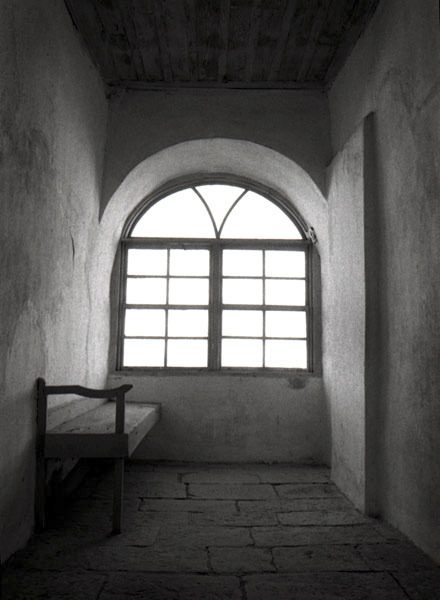
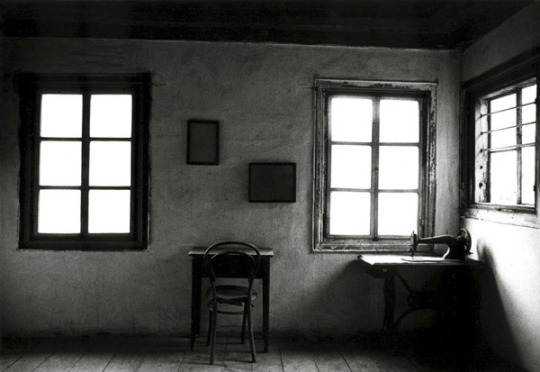

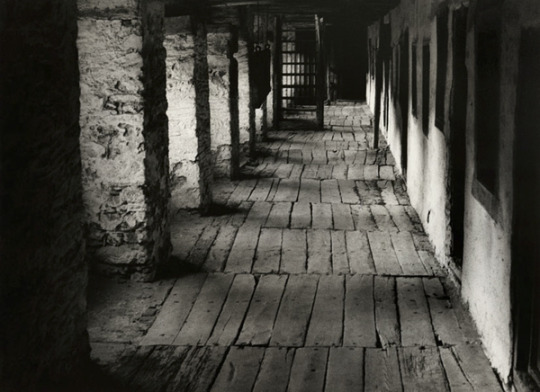


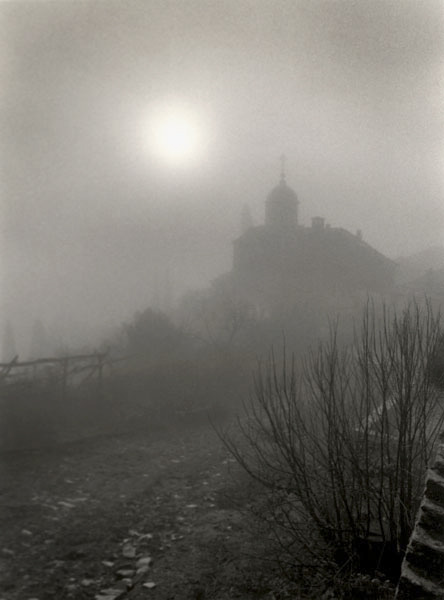
Zbigniew Kosc (Poland, b.1951)
Exit, Simonos Petras Monastery, Athos - 1983
Monastery Simonos Petras, Transit, Athos - 1983
Inside, Athos - 1985
A silent corner, Vatopedi Monastery, Athos - 1986
Empty room with a sewing machine, Monastery Zografu, Athos - 1987
Light, Monastery Vatopedi - 1986
Monastery Chilandari, Athos - 1983
A cross, Karyes - 1985
Chapel in the forest, Athos - 1986
Bogoroditsa, Athos - 1988
The monks' republic on Mount Athos is regarded as the center of Eastern Orthodox spirituality. The first monastery on the holy mountain (Aghio Oros) was established by Constantinople just before the year 1000 with the primary mission to create a center for the Christian faith far removed from the noise and bustle of the world.
Today, 20 monasteries are represented in the Assembly at Karyai, 17 of them being Greek, and one each Bulgarian, Serbian, and Russian.
http://www.zbigniewkosc.nl/ATHOS%20by%20Zbigniew%20Kosc/

Monastery Vatopedi, Athos - 1986
50 notes
·
View notes
Text


Byzantine miniature of Moses receiving the Law, Constantinople, 1087 AD
Folio 111 in Mount Athos, Vatopedi MS 716 (formerly MS 609)
Walters Art Museum W.530.B
2 notes
·
View notes
Photo
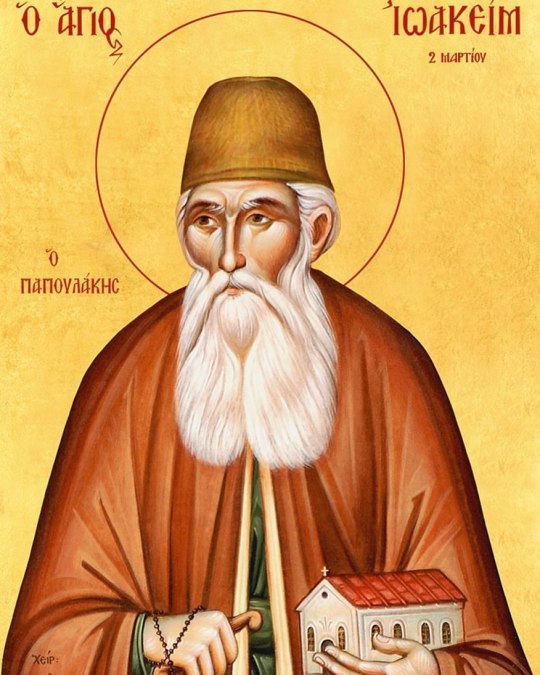
Today we also celebrate our Venerable Father Joachim “Papoulakos” of Vatopedi. Saint Joachim was born in 1786 as Ioannis Patrikios to the devout parents, Angelos and Agne Patrikios, in the little village of Kalyvia of Ithaca in Greece. At a very early age, his mother passed away and his father remarried. His stepmother would be moved in jealousy towards the young child and it was well known that she mistreated him. This forced him at an early age to learn patience and he learnt to spend many hours hiding from her; reading the Holy Scriptures and praying at a small church near his home dedicated to St. Spyridon. He joined the family business and worked for his father as a sailor. One one of his trips, he visited Mount Athos, where he became a monk and stayed at the Monastery of Vatopaedi taking on the name of "Joachim". In 1827, the saint returned to Ithaca and served the church there for the remainder of his life. He peacefully fell asleep in the Lord in Vathy of Ithaca on March 2, 1868. May he intercede for us always + Source: https://orthodoxwiki.org/Joachim_of_Vatopaidi (at Ithaca, Greece) https://www.instagram.com/p/CpR1eLwjtOo/?igshid=NGJjMDIxMWI=
10 notes
·
View notes
Text
The belt of the Virgin Mary venerated by the Greek Orthodox
Οn August 31 the Greek Orthodox Church commemorates The Placing of the Cincture or Belt (Sash) of the Most Holy Mother of God. Before this, the holy relic, entrusted to the Apostle Thomas by the Mother of God Herself, was kept by pious Christians at Jerusalem after Her Dormition.
The event is honored by the Greek Orthodox Church on the last day of August, which is the month dedicated to Panagia.
The Placing of the Venerable Belt of the Most Holy Theotokos in a church of Constantinople’s Chalcoprateia district took place during the reign of the emperor Theodosius the Younger. Before this the holy relic, entrusted to the Apostle Thomas by the Mother of God Herself, was kept by pious Christians at Jerusalem after Her Dormition. During the reign of Emperor Leo the Wise (886-911), his wife Zoe was afflicted with an unclean spirit, and he prayed that God would heal her.
The empress had a vision that she would be healed of her infirmity if the Belt of the Mother of God were placed upon her. The emperor then asked the Patriarch to open the coffer. The Patriarch removed the seal and opened the coffer in which the relic was kept, and the Belt of the Mother of God appeared completely whole and undamaged by time. The Patriarch placed the Belt on the sick empress, and immediately she was freed from her infirmity. They sang hymns of thanksgiving to the Most Holy Theotokos, then they placed the venerable Belt back into the coffer and resealed it.
In commemoration of the miraculous occurrence and the twofold Placing of the venerable Belt, the Feast of the Placing of the Venerable Belt of the Most Holy Theotokos was established. Parts of the holy Belt are in the Vatopedi monastery on Mt. Athos, in Trier monastery, and in Georgia.
Sources: oca.org and greekcitytimes.com
Hail, Mary, full of grace, the Lord is with you; blessed are you among women, and blessed is the fruit of your womb, Jesus. Holy Mary, Mother of God, pray for us sinners now and at the hour of our death.
Amen.
0 notes